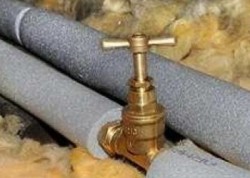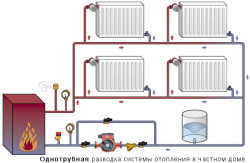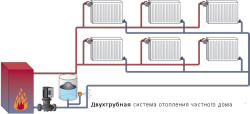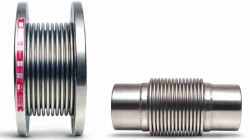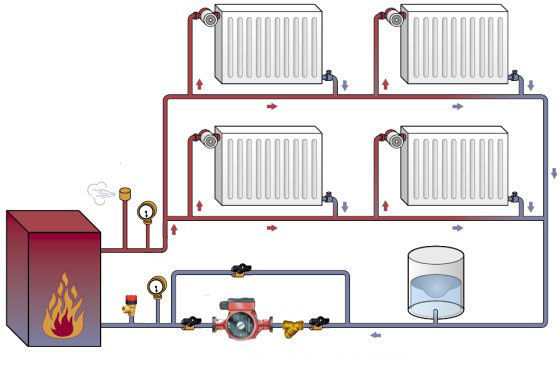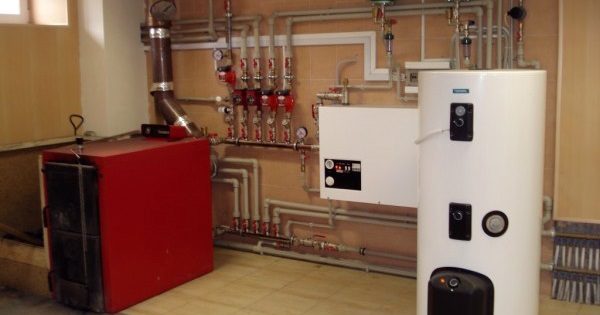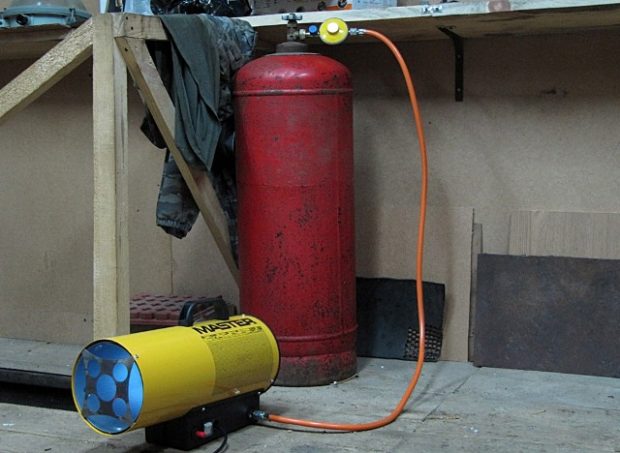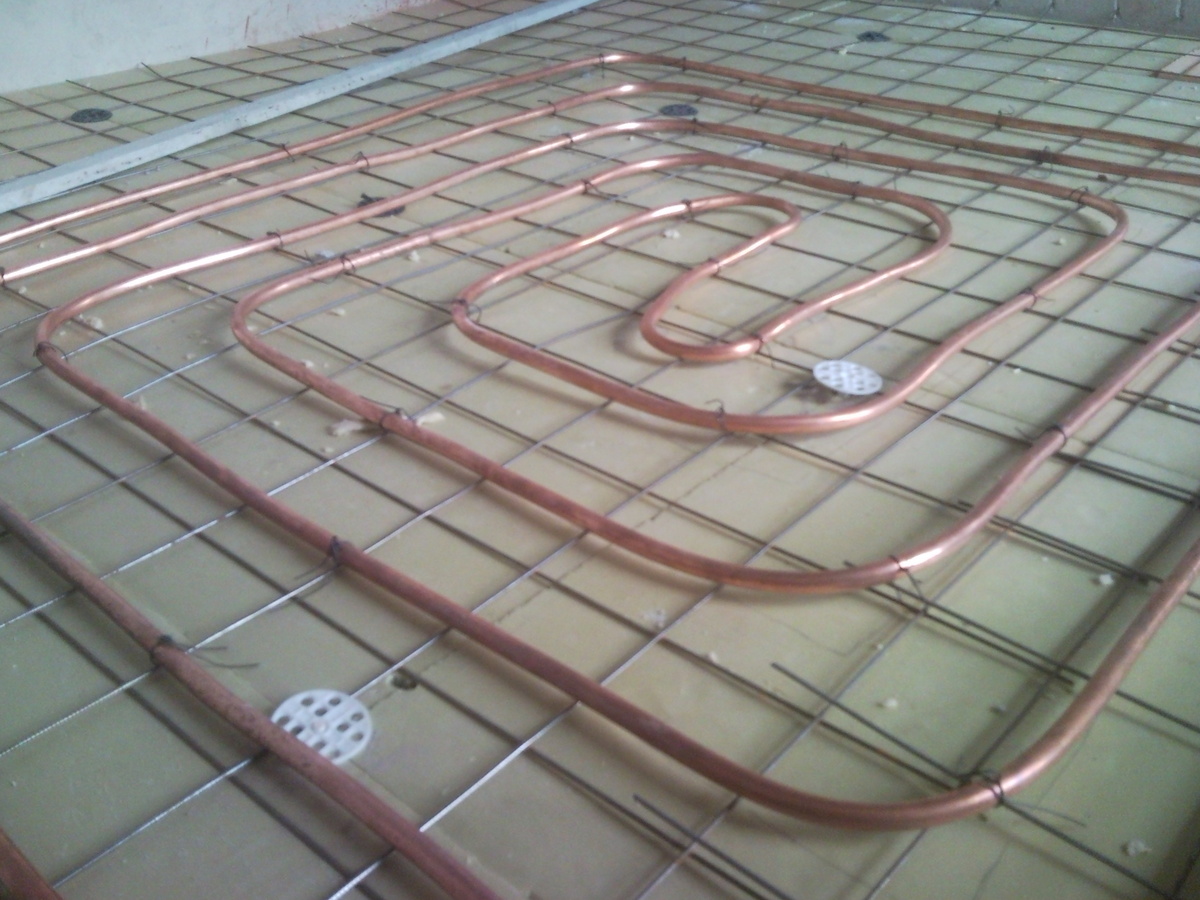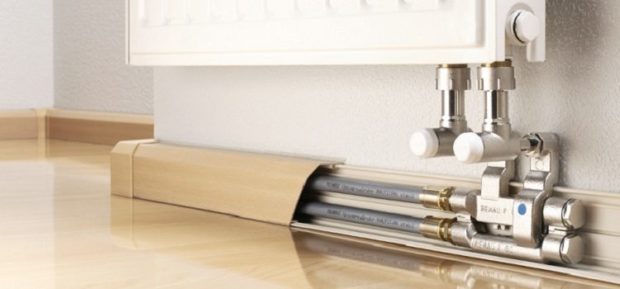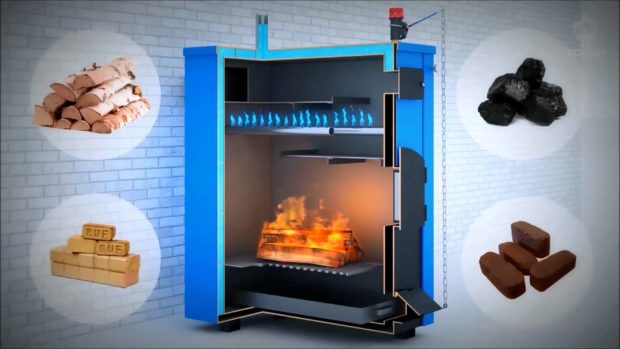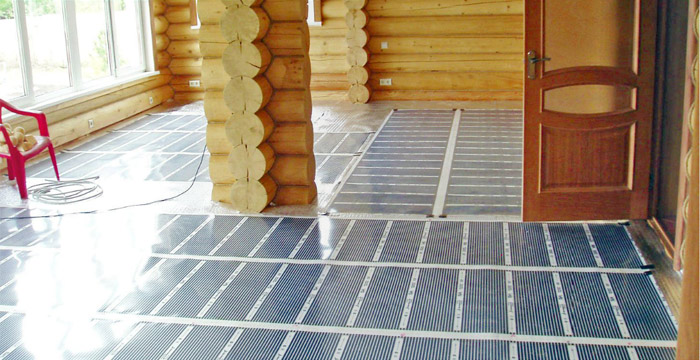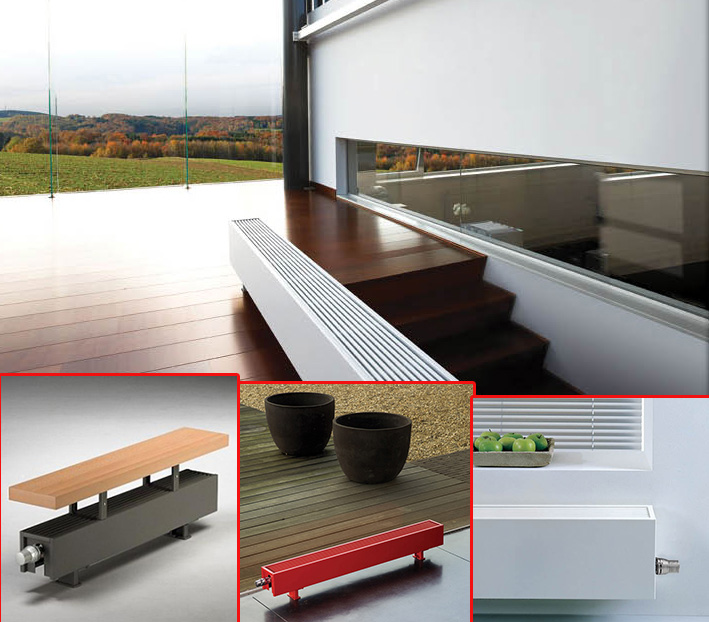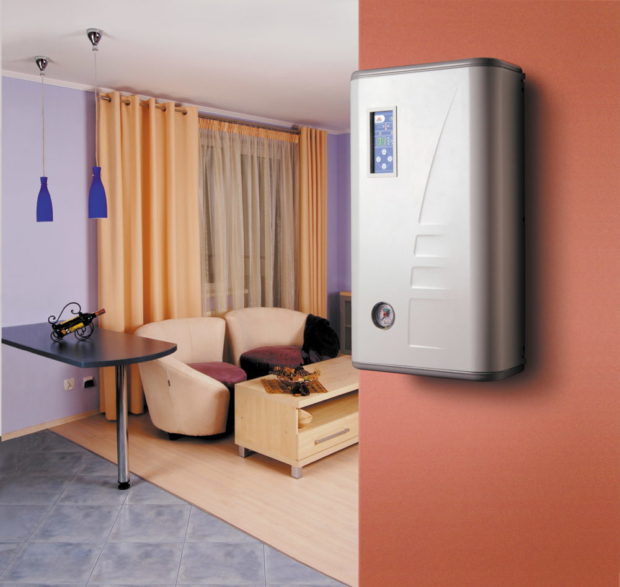Features of heating in a wooden house
Eco-friendly and beautiful houses made of logs or timber becoming more and more popular due to its availability, speed of construction and the ability to form a unique microclimate. Such housing will provide coolness in the summer and warmth in the winter, if the shrinkage of the house was correctly taken into account when designing the heating system.
Options and features of the installation of heating a wooden house
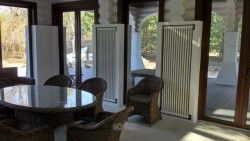 High-quality heating in a private house can be based on various types of heat energy sources, but it must necessarily take into account the specifics of wood, especially its tendency to crack at high temperatures, a sharp absorption and loss of moisture, deformation during accelerated drying. The following can act as a heat generator:
High-quality heating in a private house can be based on various types of heat energy sources, but it must necessarily take into account the specifics of wood, especially its tendency to crack at high temperatures, a sharp absorption and loss of moisture, deformation during accelerated drying. The following can act as a heat generator:
- bake;
- classic or bio fireplace;
- gas or electric convectors;
- heat pump or gun.
Some options are suitable only for small buildings, others consume a lot of energy, others require constant monitoring and manual addition of fuel, and the fourth are notable for their high price and installation complexity. For homes ranging from 80-100 square meters. m the best solution would be the equipment of a separate boiler room with installation of a heating boilerusing pipe wiring, metal chimney and aluminum or bimetal radiatorscharacterized by increased heat transfer. If the house has a gas pipeline or if it is possible to connect to a nearby highway, it is best to install gas heating equipmentwhich is characterized by profitability, durability and high productivity.
It is important to know that in order to legalize gas heating, it is necessary to go through coordination procedures in Gaztekhnadzor. If there is no desire to clutter up the interior with sectional heaters or panels, you can use system of "warm floors" or “warm baseboard”, which will build a thermal curtain along the walls and will not let cold air into the room. But no matter what heating algorithm is implemented, it is imperative to take care of high-quality thermal insulation walls and roofs. Then the heat will stay for a long time in the rooms, and energy consumption will drop to a possible minimum.
When laying communications, damage to the elements of the supporting structures must be avoided so as not to disrupt the uniform distribution of the loads of the walls, floors and roof. It is also necessary to avoid direct contact of highly heated and condensed pipes with wooden surfaces. To do this, isolation is performed as heating communicationsso and water supply. This simple action helps prevent overdrying or excessive moisture of the wood.
The coolant in the heating system of a private house
The most sought after is hydraulic heating system, which is characterized by efficiency, ease of maintenance and a long operational resource. The liquid coolant, circulating along the circuit from the pipes, brings heat to the heating devices and returns into the boiler for heating. Water is most often used as a heating medium.But such a coolant is not suitable for houses that are used as temporary suburban housing for weekends or holidays. When leaving, the heat generator must be turned off. To the cold the water did not freeze and did not destroy pipes and radiators, you will have to regularly empty and fill the system. This is not only inconvenient and takes a lot of time, which could be spent on heating the cooled rooms, but also harmful to the equipment. Fresh water is rich in salts and oxygen, which are the main sources of corrosion and solid deposits on the walls of pipes and heat exchangers.
The way out of the situation will be the use of non-toxic antifreeze based on propylene glycolretaining its properties under strong cooling. Such a working environment is designed for up to 10 heating seasons, which fully justifies the initial costs. There is no need to fill the pipes with pure antifreeze, it is enough to use its mixture with water. The proportions of the composition are determined by the real climatic conditions and the maximum winter temperature:
- up to -20С (65% water, 35% antifreeze);
- up to -25С (60% water, 40% antifreeze);
- up to -30С (55% water, 45% antifreeze);
- to -35C (50% water, 50% antifreeze).
If the mixture for the heating system contains 55-70% antifreeze, the liquid does not freeze at temperatures below -45-65C, which is more than enough even for the northern regions.
The main disadvantages of antifreeze coolant include its heat capacity (by 15%) reduced in comparison with water, its expandability, increased viscosity, fluidity and aggressiveness to rubber, which is why all detachable joints must be sealed with special stable gaskets. In addition, it is necessary to use boiler equipment, which technically provides for the use of antifreeze solution, more powerful batteries, and abandon some types of polymer and galvanized pipes. At the stage of designing heating in a private house, all these points are easily solved and allow you to get a heating system ready for use.
Schemes and installation of heating a wooden house
Heating systems can be with natural (gravity) or forced circulation of the working environment. In the first case, the laws of gravity and the temperature difference between the heated and cooled coolant are taken into account. In the second, the fluid moves due to the pressure pumped by a special circulation pump. To deliver heat to heating appliances, schemes with single-pipe or two-pipe wiring are used.
To better understand the efficiency and principle of operation single pipe heating system, consider its installation on the example of a wooden house with several floors. We immediately clarify that the presence of a single circuit provides for the rise of hot water to the highest point of the system due to the lower density and mass compared to the cooled liquid. This ensures the initial impulse for gravity flow. Moving along the highway, the coolant passes through the heaters sequentially, giving each part of the accumulated heat. Immediately noticeable uneven distribution of thermal energy between the upper and lower floors. For a small one-story wooden house, this difference is not significant, but for spacious and tall buildings is of key importance. Align temperature indicators will allow an increased number of sections far from the boiler radiators.
So that the cooled working medium could by gravity again get into the heat exchanger for heating, the heat generator must be placed below the level of radiators. The use of a circulation pump allows you to level this requirement and makes heating in a private house much more effective due to the accelerated movement of the working environment.
In a simplified form, the installation of a single-pipe heating system can be described as follows:
- boiler installation;
- installation of an expansion tank and radiators;
- laying of the pipe line;
- installation of a circulation pump (if necessary);
- connection of communications to devices;
- installation of radiator valves.
To improve the performance of single-pipe heating, special jumpers are used - bypasses, allowing you to redirect and redistribute the flow of coolant along the riser.
Two-pipe heating system much more efficient due to the simultaneous entry of heated coolant into radiators along a separate line. Having passed through the sections of one heating device, the working medium immediately enters the return line and returns to the boiler.
In addition to uniform heating of all radiators, Another important advantage of two-pipe heating is its variability. You can easily add new heating appliances and extend the mains in the right direction. Thus, when building a house, there is no need to replace the entire heating system.
Important nuances of organizing heating in a wooden house
As already mentioned, the main features of the installation of the heating system are associated with the use of wood as the main building material of the house. Even a well-dried timber contains some moisture and dries out and lends itself to partial deformation over time. On the scale of an individual structural element, such changes can be considered insignificant. But given the large areas of wall, floor and ceiling surfaces, shifts become critical and can amount to tens of centimeters. The use of standard communications and rigid fixtures will lead to pipe breaks (ruptures), destruction of the pipe joints and insulation, and equipment damage. That is why special compensators are installed on the main highways, which are equipped with a corrugated surface, resistant to dynamic loads and have the ability to contract and stretch. Sliding mounts provide freedom of movement of pipes. Open pipe installation often violates the overall aesthetic integrity of the wooden interior, so it is advisable to give preference to the hidden laying of communications.
Pipes are laid under the floor, in floors, for false walls. It is important to pinpoint the location of the piping in advance. Experts strongly recommend using collectors and equipping communications in such a way that there are no joints in the floors and under the floor. This leads to a slight increase in the construction budget, but completely eliminates the risk of leaks in a place inaccessible for operational repairs. 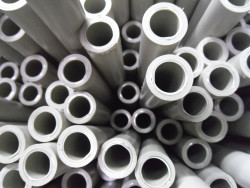 As the material of the heat transfer lines, high-quality cross-linked polyethylene pipes or polypropylenewhich are designed for trouble-free operation up to 50 years.
As the material of the heat transfer lines, high-quality cross-linked polyethylene pipes or polypropylenewhich are designed for trouble-free operation up to 50 years.
For arrangement of false wallsthat will decorate communications, do not use soft heatersunable to keep fit on their own. Best used special plates with a perfectly even fiberglass coating. They are easily attached to each other thanks to the spike groove connection.
If a load-bearing beam or a wall appears on the way of laying the communication, it is necessary to carry out an encircling turn of the pipe and in no case shatter the wood, reducing the structural strength of the building. When laying communications under the floor, holes can be made in the logs. If you wish to organize underfloor heating systemDo not use monolithic concrete screed. There is a convenient Finnish technology with the installation of communications in a dry screed on the base of several layers of drywall or cement-bonded particleboard. Tile glue is used to fill the voids.
Remember the shrinkage of the walls, pipe insulation, arrangement of the chimney and boiler room
Shrinkage of a wooden structure is a natural process of reducing and compressing walls due to evaporation of moisture from the pores of the wood. The intensity of this process depends on the type of material used. Least shrinkable houses from glued beams and chamber-dried beams. But such materials are more expensive. Most often, logs and timber of natural moisture, which are affordable, give significant shrinkage. Before installing heating in a private house, it is advisable to let it stand for 8-12 months. If this is not possible, the pipes are installed using expansion joints and sliding mounts.
Strong thermal effects and moisture in the form of condensate on pipes, which lead to cracking, deformation, appearance, are equally detrimental to the tree mold and rot. The most economical and correct way to eliminate these problems will be the heat insulation of highways with a special tubular material.
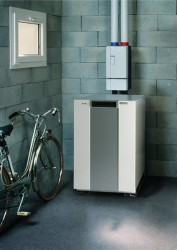 The chimney can become very hot during the operation of the heat generator, which carries significant risks of wood fire. Therefore, it is necessary to use certified chimneys made of refractory materials with insulation. The best option is a freestanding brick pipe with its own foundation, which rises above the house to a height of 2 meters. This design provides excellent traction, efficiently removes combustion products and reliably protects a wooden house from temperature effects.
The chimney can become very hot during the operation of the heat generator, which carries significant risks of wood fire. Therefore, it is necessary to use certified chimneys made of refractory materials with insulation. The best option is a freestanding brick pipe with its own foundation, which rises above the house to a height of 2 meters. This design provides excellent traction, efficiently removes combustion products and reliably protects a wooden house from temperature effects.
Mounting gas boiler must be done on a fireproof floor or wall base. If used as a heat source solid fuel heat generator, you need to take care of a full boiler room in which all horizontal and vertical surfaces are not hot.

